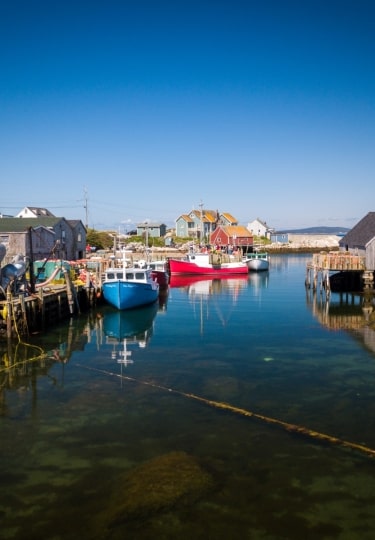The best time to visit Nova Scotia is the summer season, July and August. This is a time for outdoor dining, festivals, hiking and sailing, and enjoying the mild summers. In hotter spells, the weather can even be fine enough to sunbathe on the beach, although the Atlantic remains bracing for swimmers.
Nova Scotia’s landscape and climate are very much shaped by the wild Atlantic Ocean. The climate is typically continental, with long, harsh winters and mild, sometimes wet summers. Big Atlantic storms and heavy snow are common in winter. The north of the province, Cape Breton Island, is cooler and wetter than the peninsula that makes up most of Nova Scotia.
Winter aside, there are many reasons to visit this enthralling place. The Bay of Fundy in the north has the highest tides in the world, and watching the tide turn is an awe-inspiring experience. Summer brings excellent whale-watching, too. In fall, the gentle hills are ablaze with color as leaf-peeping season arrives. And then there’s the famous lobster, in season from November to May.
Visiting Nova Scotia By Season
Summer
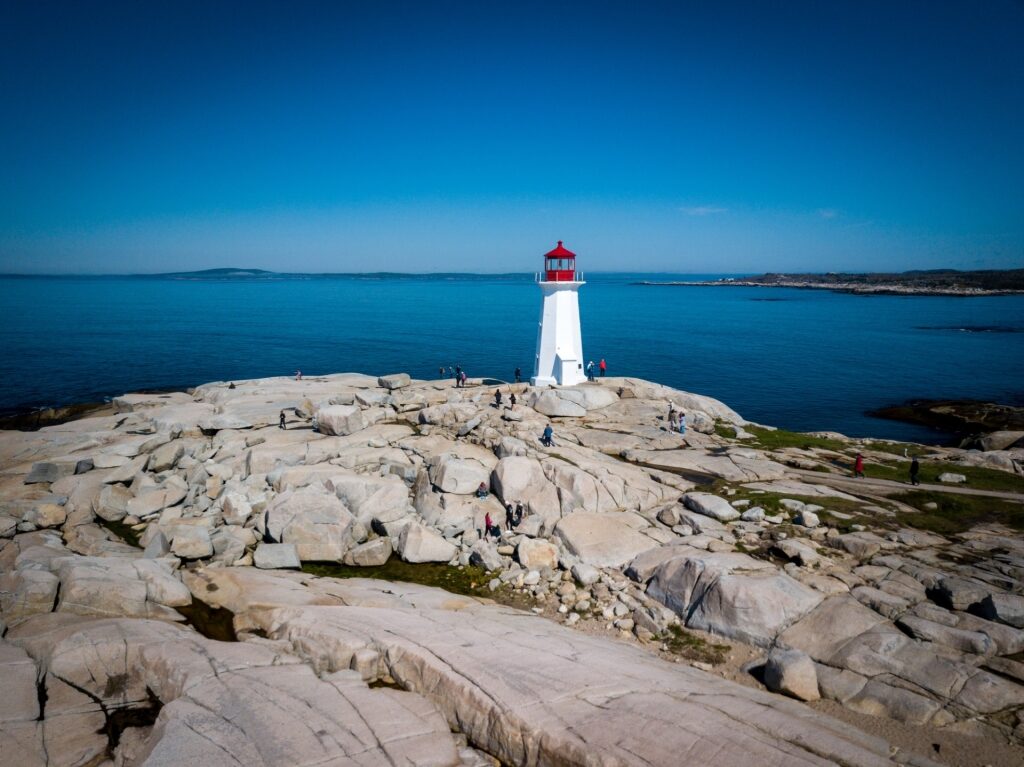
Peggy’s Cove
Nova Scotia has short, intense summers, when locals pack in as much activity as possible, from beach days to festivals, outdoor dining, and hiking in the national parks. In fact, summers in Nova Scotia are so delightful that many locals will stay at home during July and August rather than heading elsewhere on vacation. Canadian city dwellers decamp to their summer seaside cottages.
Expect average daily highs in August, the hottest month, of 65.1°F (18.4°C) in Sydney and a slightly warmer 66.2°F (19°C) in Halifax. Rainfall is fairly evenly distributed throughout the year, but August is the driest month, with Sydney receiving 3.9 inches (99mm) and Halifax 3.2 inches (80mm).
Fall
Fall is the best time to go to Nova Scotia for leaf-peeping. Indeed, the province receives a second peak of visitors in September and October, here to gaze in wonder at the hillsides glowing with brilliant shades of yellow, orange, and scarlet. Farmers’ markets are a riot of color as giant pumpkins and squashes are harvested and apples and pears are in season.
The weather in early fall is still pleasant. In Halifax, expect average daily temperatures of 60.3°F (15.7°C) and 4.1 inches (105mm) of rainfall. There should still be around six hours of sunshine daily, although this has dropped to just 3.5 as November sets in, and a mere 2.5 in Sydney, to the north.
Winter
Winters in Nova Scotia are harsh and bitterly cold. Snow often comes in December. Big storms, known as nor-easters, blow in from the Atlantic, bringing strong winds and icy temperatures. This is a time when locals hunker down, enjoying the local pubs and taprooms, and venturing out between storms for hiking and skiing. Lobster is in season and appears on restaurant menus.
Spring
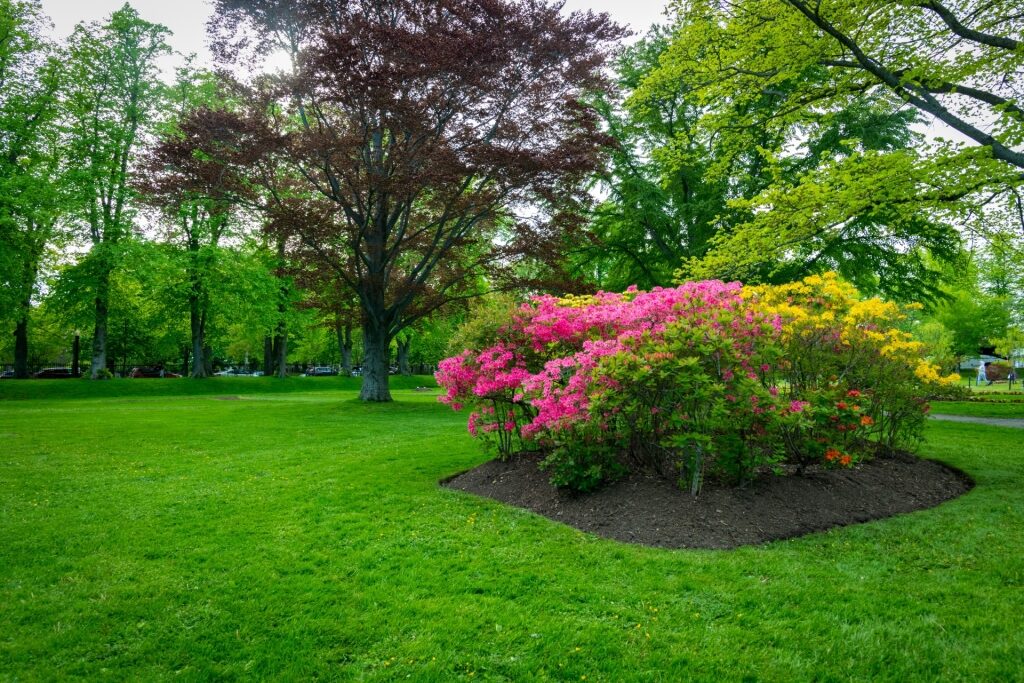
Halifax
March, April, and May are a time of change in Nova Scotia. March is essentially still winter, often with snow on the ground. But April and May bring new life, wildflowers, and trees in bud. Fields are green and the landscape a riot of color. The coast may be draped in an ethereal fog, which simply adds to its beauty.
April is still a little cool for visitors, and many attractions may not yet be open. By May, you can expect average daily highs of 59°F (15.1°C); note that these are highs, though, and evenings will still be cool. Rainfall is still a likelihood; in May, Halifax receives on average 4.3 inches (110mm) and six hours of sunshine. May is the end of the lobster season and the last chance to feast on fresh crustaceans.
When Is Rainy Season?
Rain is pretty consistent year-round in Nova Scotia. Precipitation is higher from October to March. Around December, it will fall as snow, not rain, and lies on the ground until April. It’s a good idea to travel with waterproof clothing at any time of year—and if you visit in winter, you’ll need full thermals as protection against the icy weather.
When Is High Season?
Nova Scotia has two high seasons. July and August are the peak of summer, when the weather is at its finest and national parks, towns, and beaches are busy. There’s a second, smaller peak in late September and October, when visitors come to see the brilliant colors of the fall foliage as the maple, oak, and birch trees assume their autumn hues.
When Is Shoulder Season?
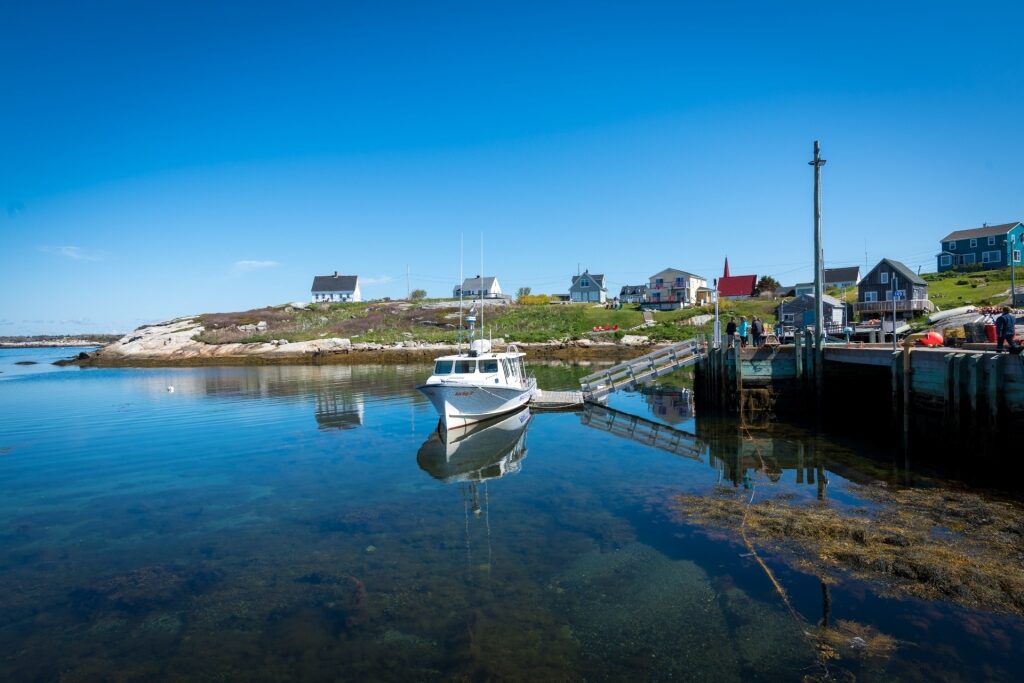
Peggy’s Cove
Shoulder season in Nova Scotia is May and June, before the summer rush, and again in September, between the end of summer and the start of the leaf-peeping season. This is a good time to visit; everywhere is quieter and temperatures are not too cold.
If you visit in May, bring insect repellent as blackflies can be a nuisance during the day, replaced by mosquitoes when June arrives.
When Is Low Season?
Nova Scotia’s long, dark winters are the low season for tourism. From November, when the days are short and the mercury plummeting, to April, when the snow is finally melting, is the region’s quietest period.
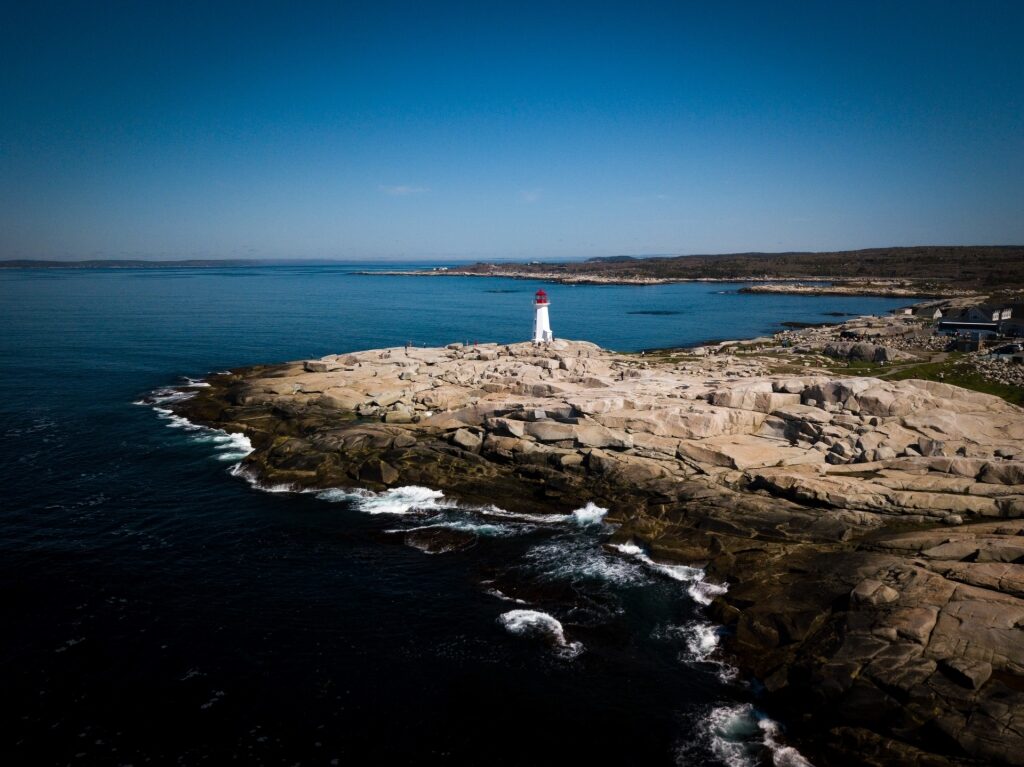
Peggy’s Cove
Ready to discover the wild beauty of this Maritime province? Browse Celebrity’s cruises to Nova Scotia and plan your big adventure.
